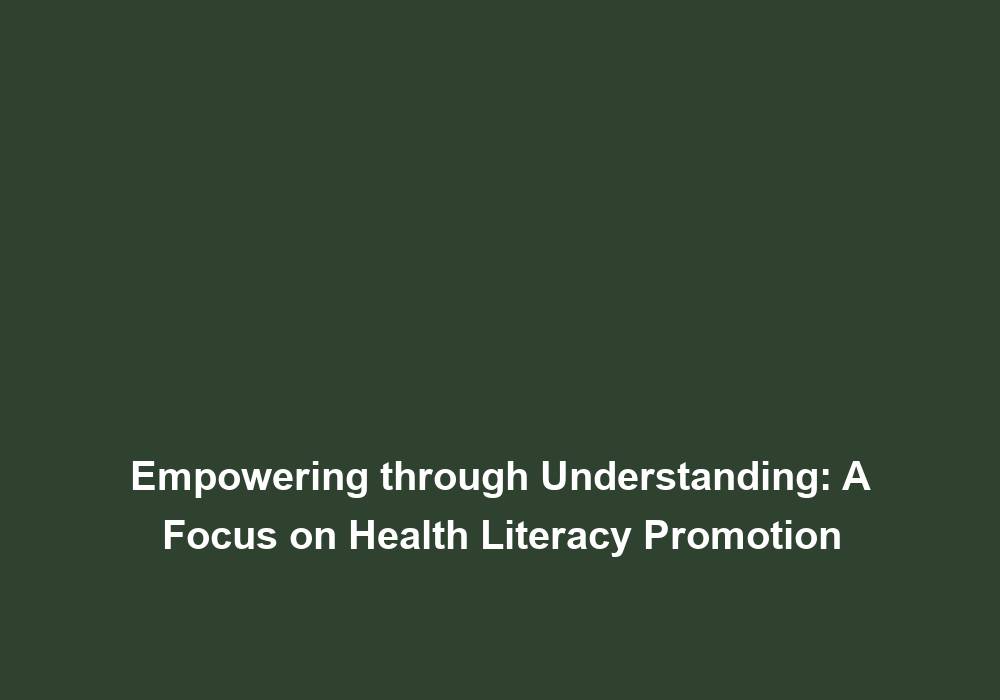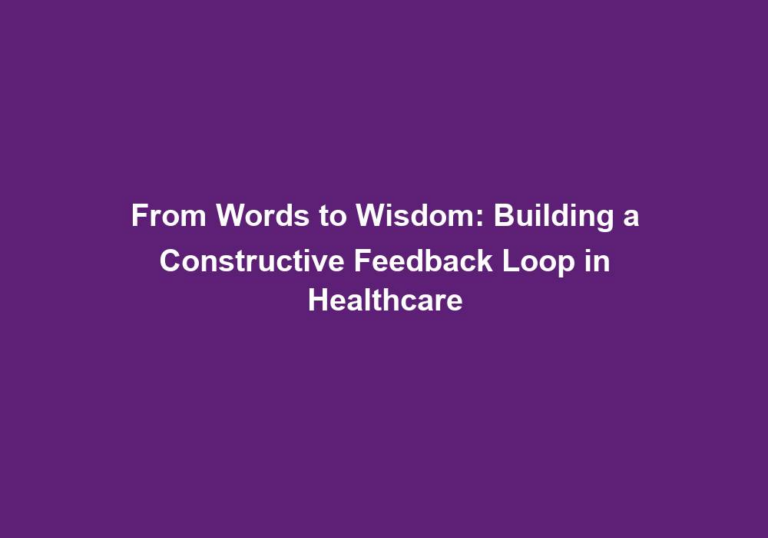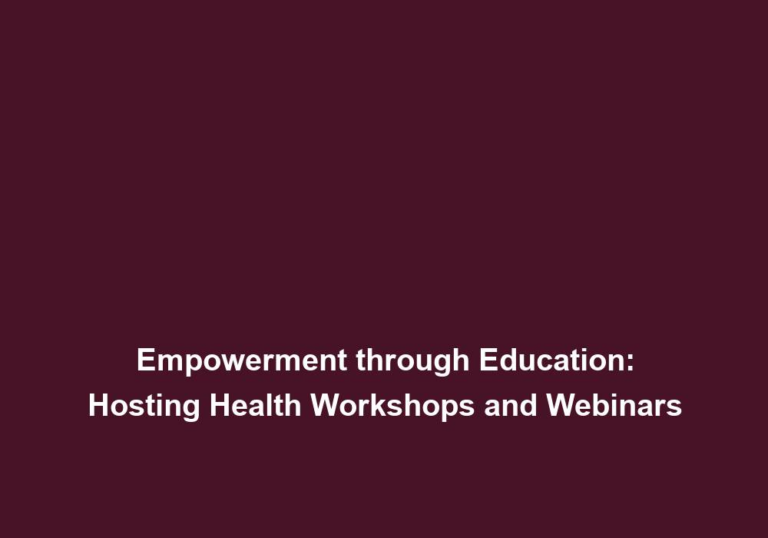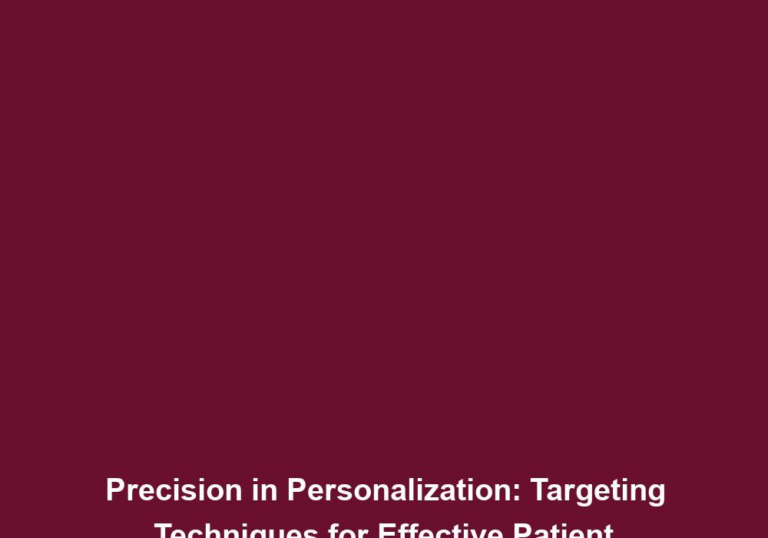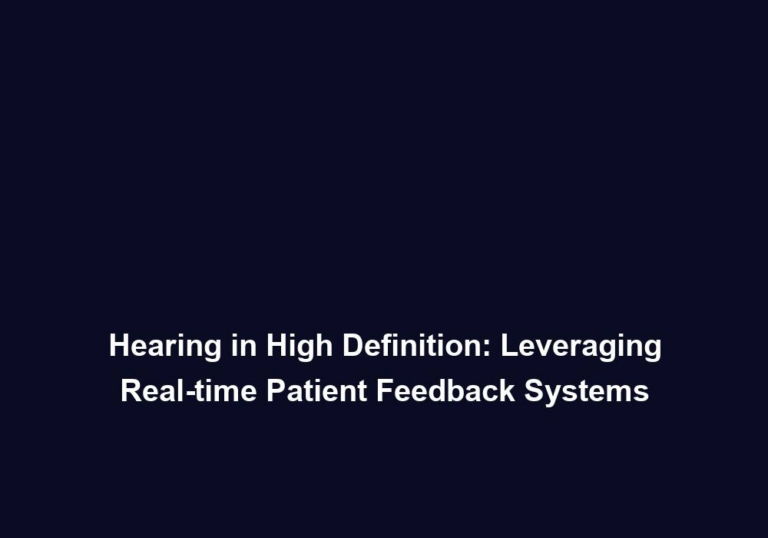Empowering through Understanding: A Focus on Health Literacy Promotion
In today’s fast-paced world, the ability to understand and navigate through complex health information is crucial. Health literacy plays a significant role in promoting individual well-being and empowering people to make informed decisions about their health. In this article, we will explore the importance of health literacy and discuss effective strategies to promote it.
What is Health Literacy?
Health literacy refers to an individual’s ability to understand, process, and use health information to make informed decisions and take appropriate actions regarding their health. It encompasses various skills, including reading, listening, analytical thinking, and decision-making. Health literacy is not just about having access to information; it is about comprehending and effectively using that information to improve one’s health outcomes.
Health literacy is essential because it enables individuals to understand and interpret medical instructions, follow treatment plans, and navigate healthcare systems. When people have low health literacy skills, they may struggle to understand their health conditions, medication labels, and informed consent forms. This can lead to medication errors, unnecessary hospitalizations, and delayed or inadequate treatment.
Moreover, low health literacy disproportionately affects vulnerable populations, such as older adults, minorities, immigrants, and those with lower socioeconomic status. These disparities can perpetuate existing health inequities and hinder efforts to achieve optimal health for all.
The Impact of Health Literacy
Low health literacy is a significant public health issue with far-reaching consequences. Individuals with limited health literacy are more likely to experience poorer health outcomes, increased healthcare costs, and reduced quality of life. They may struggle to understand health instructions, medication labels, and informed consent forms, leading to medication errors, unnecessary hospitalizations, and delayed or inadequate treatment.
Furthermore, low health literacy disproportionately affects vulnerable populations, such as older adults, minorities, immigrants, and those with lower socioeconomic status. These disparities can perpetuate existing health inequities and hinder efforts to achieve optimal health for all.
Strategies for Promoting Health Literacy
- Clear and Accessible Communication: Healthcare professionals play a crucial role in promoting health literacy. They should use plain language, avoiding jargon and complex medical terminology. By communicating clearly and effectively, healthcare providers can empower individuals to understand their health conditions, treatment options, and preventive measures.
- Use plain language: Avoid using complex medical terms and explain concepts in simple terms that the patient can understand.
- Avoid jargon: Use everyday language instead of technical terms that might confuse the patient.
- Provide examples: Use real-life examples to help patients relate to the information and understand its relevance.
- Patient Education Materials: Developing patient education materials in plain language is essential for promoting health literacy. These materials should be easily understandable, visually appealing, and culturally appropriate. Using simple language, visual aids, and real-life examples can enhance comprehension and engagement.
- Use plain language and visuals: Present information in a clear, concise manner using visuals, diagrams, and infographics to aid understanding.
- Tailor materials to the target audience: Consider the cultural background and literacy levels of the intended audience to ensure the materials are accessible and relatable.
- Test materials for comprehension: Conduct usability testing to ensure that the materials are easily understood by the target audience.
- Health Literacy Training for Healthcare Providers: Incorporating health literacy training into medical and nursing curricula can equip future healthcare professionals with the skills to communicate effectively with patients. By increasing their ability to assess patients’ health literacy levels and tailor communication accordingly, healthcare providers can optimize patient outcomes.
- Include health literacy in professional training: Integrate health literacy training into the curriculum for healthcare professionals, emphasizing the importance of clear communication and patient-centered care.
- Teach effective communication techniques: Provide healthcare professionals with strategies to improve their communication skills, such as active listening and using plain language.
- Emphasize cultural competence: Train healthcare providers to understand and respect cultural differences, ensuring that communication is culturally sensitive and appropriate.
- Collaborative Decision-Making: Encouraging shared decision-making between patients and healthcare providers is key to promoting health literacy. By involving patients in their care, explaining treatment options, and considering their preferences, healthcare professionals can empower individuals to make informed decisions about their health.
- Involve patients in their care: Encourage patients to actively participate in discussions about their health, ask questions, and share their preferences.
- Explain treatment options: Provide clear explanations of different treatment options, including potential risks and benefits, to help patients make informed decisions.
- Consider patient preferences: Take into account patients’ values, beliefs, and lifestyle when discussing treatment options, ensuring that decisions align with their individual needs.
- Digital Health Tools: In the digital age, utilizing technology to enhance health literacy is crucial. Mobile applications, websites, and online resources can provide accessible health information, interactive tools, and self-management support. However, it is essential to ensure these resources are user-friendly, culturally sensitive, and available in multiple languages.
- Develop user-friendly digital platforms: Create user-friendly websites and mobile applications that are easy to navigate and understand.
- Provide multilingual resources: Translate digital health tools into multiple languages to cater to diverse populations.
- Incorporate interactive features: Include interactive features such as quizzes, videos, and self-assessment tools to engage users and enhance understanding.
- Community Engagement and Partnerships: Engaging with community organizations, schools, and local stakeholders can promote health literacy at the grassroots level. By collaborating with these groups, healthcare providers can reach underserved populations, tailor health messages to specific communities, and address social determinants of health that impact health literacy.
- Partner with community organizations: Collaborate with local community organizations, schools, and libraries to provide health literacy resources and educational programs.
- Conduct workshops and seminars: Organize workshops and seminars to educate community members about health topics and improve health literacy.
- Address social determinants of health: Recognize and address social determinants of health, such as education, income, and access to healthcare, that can influence health literacy levels in a community.
- Evaluation and Continuous Improvement: Regular assessment of health literacy initiatives is vital to identify strengths, areas for improvement, and to make necessary adjustments. Using quantitative and qualitative data, healthcare organizations can measure the impact of their efforts and refine strategies accordingly.
- Monitor and evaluate outcomes: Track the impact of health literacy initiatives on patient outcomes, healthcare utilization, and patient satisfaction.
- Gather feedback: Obtain feedback from patients and healthcare providers to identify areas for improvement and address any barriers to effective communication.
- Continuously improve strategies: Use collected data and feedback to refine health literacy strategies and ensure ongoing improvement.
Conclusion
Health literacy is a fundamental component of individual empowerment and improved health outcomes. By promoting clear and accessible communication, providing patient education materials, training healthcare professionals, encouraging collaborative decision-making, utilizing digital health tools, fostering community engagement, and continuously evaluating efforts, we can effectively enhance health literacy.
Empowering individuals through understanding and promoting health literacy is not only a moral imperative but also a critical step towards achieving equitable and patient-centered healthcare systems. Let us work together to ensure that health information is accessible, comprehensible, and actionable for all.

